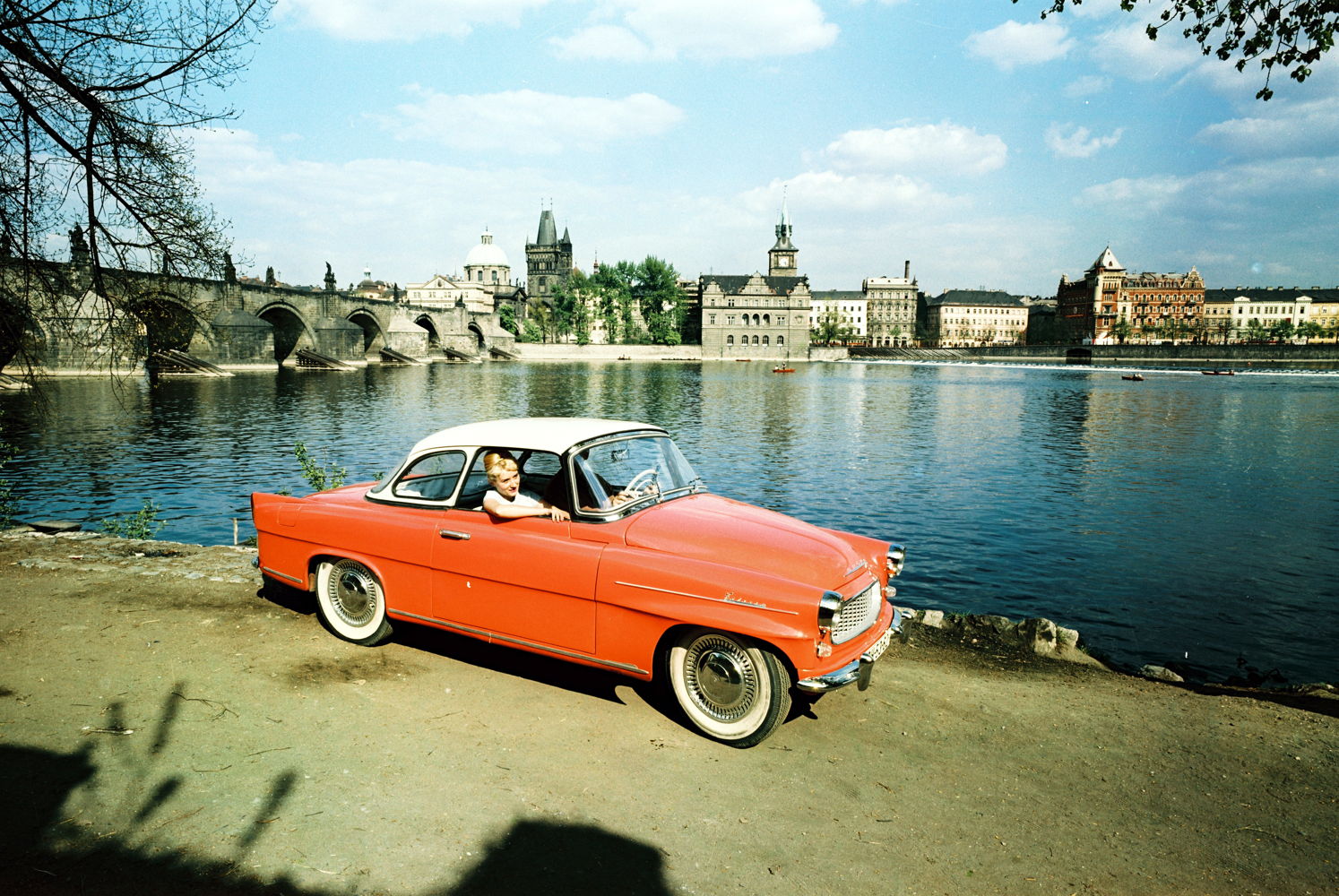The ŠKODA FELICIA convertible celebrated its world premiere 60 years ago

› ŠKODA presented the open-top ŠKODA FELICIA in Leipzig on 1 March 1959
› Most ŠKODA FELICIA convertibles found their fans in export markets
› The open 2 + 2-seater is one of the most popular classic ŠKODA models among collectors
Mladá Boleslav, 27 February 2019 – The ŠKODA FELICIA – probably the most popular Czech convertible ever – is celebrating the 60th anniversary of its world premiere. The beautiful 2+2-seater first rolled into the limelight at the Spring Fair in Leipzig on 1 March 1959. A total of 14,863 vehicles of this type ran off the production lines at the Czech ŠKODA plant in Kvasiny between 1959 and 1964. More than two-thirds of the production was exported around the world.
The Leipzig Spring Fair opened its doors on Sunday, 1 March 1959. The new cars that ŠKODA presented at the exhibition were crowd pullers; alongside the OCTAVIA, the attractive ŠKODA FELICIA convertible appeared in front of an audience for the first time. Shortly after this world premiere, the open-top FELICIA also attracted international attention at the Geneva Motor Show from 12 to 22 March. From 4 April 1959, ŠKODA also presented three copies of the new convertible at the New York Coliseum; as the world’s largest automobile market, the USA had immense significance for all manufacturers. European convertibles, in particular, were import hits across the Atlantic, and ŠKODA offered a desirable new model with the open-top FELICIA.
The predecessor of the beautiful newcomer was the ŠKODA 450, which was also released as a convertible in 1957. The type designation was derived from the number of cylinders and the engine power – the ŠKODA 450 had a four-cylinder with 50 hp. Most of the 1,010 units that had been built prior to the 1959 model change found enthusiasts in demanding markets such as Britain and the United States.
The successor to the melodious name ‘FELICIA’ was produced at the Kvasiny factory and featured a number of significant technical innovations. Instead of the transversely mounted leaf spring that the 450 used, the newcomer’s front axle now utilised coil springs. Thanks to large rubber silent blocks, significantly fewer vibrations were transmitted through the central tube chassis to the all-metal body. Further, the now asymmetrically refined headlights lit up the road more effectively. In addition to the standard folding roof, ŠKODA even offered a 27-kilogram light fibreglass hardtop as an option for the FELICIA.
The basic version of the ŠKODA FELICIA weighed 930 kilograms and had a payload of 300 kilograms. Thus, the 2+2-seater could comfortably carry four people and up to 320 litres of luggage. With a wheelbase of 2,390 millimetres, the body stretched to 4,065 millimetres in length. Under the bonnet purred a four-cylinder in-line petrol engine with OHV valve control and a 1,089 cm3 displacement, which reached its peak output of 50 hp at 5,500 revolutions. The maximum torque of 74.5 Nm was available at 3,500 rpm. Rolling on 15-inch tyres, the convertible reached a top speed of 130 km/h; the average consumption was 9 litres per 100 km.
Thanks to its attractive proportions, the ŠKODA FELICIA was in great demand both at home and abroad. In the first year of production, 1959, almost 70% of the 3,251 units manufactured were exported. The chic convertible even attracted considerable attention at more exotic locations such as the auto shows in Mexico City and Johannesburg. Among the most famous foreign owners was one of the best hockey professionals of his time – the Canadian Maurice ‘Rocket’ Richard (1921-2000), team captain of the Montreal Canadiens. As the first in the history of the NHL National Hockey League, the FELICIA driver scored 50 goals in 50 NHL games.
In March 1961, ŠKODA again presented a revised FELICIA in Geneva. In addition to a more distinctive grille, the drop-shaped taillight units were particularly eye-catching. Since the front seat backs could now fold down, the convertible even offered the possibility of lying down to sleep in the vehicle. The new control panel made of the fibreglass-reinforced plastic Polytex received a cover made of black artificial leather. In the fibreglass hardtop, openable side windows improved the air supply to the interior. One particularly sporty feature of the new generation was that FELICIA drivers could change gears faster and more precisely thanks to the repositioning of the gearstick from the steering column to the centre tunnel. With the higher-quality 70-octane petrol available in most countries, the 1.1-litre engine’s output increased by 2 hp.
The following year, in 1962, the more powerful FELICIA SUPER appeared with a 1.221 cm3 four-cylinder, which supplied two downdraught carburettors made by the Czechoslovak brand Jikov with a combustible fuel mix. Thanks to these and other technical improvements, customers now enjoyed 55 hp (40.5 kW) at 5,100 rpm and 82 Nm at 3,000 rpm. These performance characteristics meant the FELICIA SUPER – weighing only ten kilograms more than the basic model – reached a top speed of 135 km/h on wider tyres measuring 5.90-15.
The popular ŠKODA FELICIA model family was produced at the same time and on the same line in Kvasiny as the equally successful OCTAVIA COMBI. By 1964, 14,863 FELICIA and FELICIA SUPER vehicles had been produced at the site before the era of ŠKODAs with an open body, central tube frame and the classic front-engine rear-wheel-drive concept came to an end. ŠKODA was preparing for the production of the completely redesigned rear-engine generation, which started that same year with the 1000 MB.
Sixty years after the world premiere, the ŠKODA FELICIA still enjoys great popularity today. On the one hand, this is reflected in the growing interest of classic car collectors and rising market prices of well-preserved specimens. On the other hand, FELICIA drivers at classic car events experience the great affection that this model awakens among classic fans from Western Europe to China.

